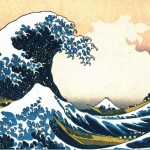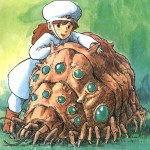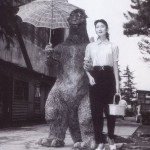When you imagine an apocalypse, what comes to mind? Probably images of destruction: ruined buildings, cities devoid of living people, a permeating sense of sadness and loss. In reality, these are all things we fear. Yet, the apocalyptic is one of the most prominent genres in Japanese pop culture. Why is that so?
Prewar Origins: Natural Disasters, Mono no Aware and Mappō
Contrary to popular belief, Japanese culture was suffused with imaginations of the apocalyptic before postwar Japan. That does not mean to say that the bombings of Hiroshima and Nagasaki, among other disasters, did not propagate an intense focus on the genre. It merely asserts that the concern had already been established.
To start off, Japan as a nation has had its fair share of natural disasters. The country is located near two converging tectonic plates and is at the edge of the Pacific Ocean. This means that Japan has constantly been subjected to a number of typhoons, volcanic eruptions, tsunamis and earthquakes over the course of its history. In short, the destruction associated with those natural disasters had already become a part of Japanese culture over time. A great example of this would be The Great Wave off Kanagawa by Hokusai, the image of a giant wave towering over Mt. Fuji being one of the most popular images associated with Japan today.
Another one of the earlier fundamental elements of the apocalyptic exclusive to Japanese culture is the concept of Mono no Aware. The philosophy revolves around the awareness of impermanence. This was developed in the Heian period, when a scholar named Motoori Norinaga wrote a critique on the famous Tale of Genji (Yoda). His critique was the basis for the literary philosophy, which ended up being a major influence in Japanese culture.
The concept of Mappō is also an apocalyptic doctrine that has been present since Japan’s Kamakura Period. As Susan Napier states, “Mappō revolves around the idea of a destroyed word being saved by a religious figure, who in this case was the Maitreyea Buddha” (252). One of the best examples that has demonstrated this concept in Japanese popular culture was Hayao Miyazaki’s Nausicaa of the Valley of the Wind, where Nausicaa posed as the messianic figure that diverted the strife between humans and insects of a toxic jungle.
Postwar Origins: Unnatural Disasters and the Creation of Kaiju Eiga
Undoubtedly, Japan’s fascination with the apocalyptic grew exponentially postwar. Japan is the only country that has ever been subjected to atomic attack, and many aspects of its pop culture were influenced by such events.
Gojira, the iconic monster that decimated Tokyo in films of the postwar era, was a creative response to the unnatural disasters that wrecked Japan in 1945 and 1954. The Lucky Dragon incident of 1954, in which the United States’ Atomic Energy Commission set off a thermonuclear bomb near a Japanese fishing boat, brought back the fear associated with nuclear destruction (Szczepanski).
Such incidents, including elements that were present in Japanese culture before World War Two, are good reason to support why the apocalyptic genre is and continues to be a significant theme in Japanese popular culture.
Gojira’s creation led to the popularity of the monster film genre in Japan, or the kaiju eiga. According to Gyan Prakash, kaiju eiga are a result of “’mass trauma that exists over the use of nuclear weapons and the possibility of future nuclear wars’ while also reveling in the aesthetics of destruction….the peculiar beauties to be found in wreaking havoc, in making a mess” (107).
[youtube]https://www.youtube.com/watch?v=IcxsAOK7aXs&list=FLuZRfAHtqRT5J8Sy7GftjPw&index=2[/youtube]
With the continual presence of natural disasters in Japan and the foundations of Mono no Aware and Mappō doctrine already in place, the atomic bombs at Hiroshima and Nagasaki, as well as the Lucky Dragon incident, set the stage for the rise of the apocalyptic genre in Japanese popular culture.
Discussion Questions:
1. Godzilla spawned the beginning of the kaiju eiga genre in Japan. Do you think the 2014 reboot was influenced primarily by the disaster at Fukushima (addressing a grand narrative) or because we just want to see big monsters fight it out (Azuma’s database)?
2. Do you think that the apocalyptic genre has changed over time? For example, it is said that the genre has become more optimistic in recent years, compared to the nihilistic qualities of the apocalyptic genre in the 1970’s and 80’s.
Sources:
Napier, Susan Jolliffe. Anime from Akira to Howl’s Moving Castle: Experiencing Contemporary Japanese Animation. New York: Palgrave Macmillan, 2005.
Prakash, Gyan. Noir Urbanisms: Dystopic Images of the Modern City. Princeton: Princeton University Press, 2010.
Szczepanski, Kallie. “Lucky Dragon Incident | Bikini Atoll Tests and Japanese Fishermen.” http://asianhistory.about.com/od/japan/p/Lucky-Dragon-Nuclear-Incident.htm.
Yoda, Tomiko. “Fractured Dialogues: Mono No Aware and Poetic Communication in The Tale of Genji.” Harvard Journal of Asiatic Studies Vol. 59, no. No. 2 (1999).




Firstly I’d like to say that I really appreciated the inclusion of Mono no Aware (物の哀れ), since I find words and phrases with no direct English translations to be impressive representations of their country of origin’s culture and therefore worth learning more about.
Unrelated to that and in response to the question at the beginning: “When you imagine an apocalypse, what comes to mind?”, I’d say that my first thought is almost always of survival. I’d even go as far as to say that, that is probably among a lot of people’s first thoughts. Movies like Armageddon, 2012, Independence Day, The Day After Tomorrow, The Book of Eli, etc., focus on the survival of people in general. Though, seeing the movies I’ve named, this could possible be just a western look at the apocalypse. It seems in Western films at least the destruction takes a backseat to the development of the characters. What do you think? I’d like to know what specifically Japanese apocalyptic movies seem to focus on. The destruction itself, how people react and exist in the destruction, somewhere in between?
And in response to your first discussion question: Godzilla 2014, to me, seemed to be made for a more American audience rather than a Japanese one, so I think it was more tailored towards American disaster standards (i.e. heavy CGI), yet did seem to parallel ideas shared all over the world about environmental safety concerns. According to the Wikipedia page on its production,(http://en.wikipedia.org/wiki/Godzilla_%282014_film%29#Writing), the writing began in 2010, before the Fukushima disaster, however the director looked at the disaster in question for inspiration on depicting destroyed cities. (http://en.wikipedia.org/wiki/Godzilla_%282014_film%29#Influences). I don’t think that the disaster was the reason the movie was created, but it definitely did influence the movie greatly.
Really cool article! I think the connection between the Fukushima disaster and the new Godzilla movie is really interesting. I agree it was more targeted to Western audiences, but I’ve heard the original Godzilla creators really liked it too. I think it would be interesting to also compare the recent release Pacific Rim to the history of kaiju eiga. In Pacific Rim, they actually call the monsters “kaiju” in obvious reference to the film’s roots, and I wonder if this indicates a possible growing interest in the revitalization of kaiju narrative in the West, specifically in its Japanese roots?
I’m not sure I can say whether or not the apocalyptic genre has become more optimistic in recent years in Japan, but I would say that Japan’s apocalyptic stories tend to seem less dark. Perhaps that’s because of censorship laws, or perhaps it’s because these kinds of narratives have become somewhat normalized, but even Nausicaa of the Valley of the Wind did not have the same level of brutality as, say, The Walking Dead. And, for me at least, it seems like Japanese apocalyptic narratives tend to focus MORE on the people and less on the monsters. Yes, the film is called Godzilla, but a most of the emphasis is placed on the story of the humans struggling through the apocalypse, with the monster itself appearing for only a few moments. Whereas with media like The Walking Dead, the monsters appear often and play a big part in actively and personally attacking the protagonists. Just going off my limited knowledge of Godzilla and Nausicaa, it seems like the Japanese view these monsters more as forces of nature, completely indifferent and impersonal to humanity. Do you agree?
It seems to me that it might also be useful to consider the effect that Japan’s financial crisis in the 1990s had on its apocalyptic genre. In such a pessimistic social climate, do you think optimistic stories held more appeal? Also, was there an increase in natural disaster stories in Japan after this crisis? If so (and this merely speculation) it seems that
stories of elemental crises might somehow be more reassuring than the manmade crisis with which they were actually dealing, for responsibility would be temporarily lifted off of their shoulders.
Additionally, I do not know much about specifically Japanese apocalyptic stories, but in the West, more recent films such as 2012, The Day After Tomorrow, and even Godzilla have strong environmental overtones. This might be something worth considering, especially in light of a growing environmentalist movement in Japan and speculation that climate change worsened or perhaps even caused the devastating 2011 earthquake.
I think your topic is really interesting! I’m looking forward to hearing what else you have to say about it.
Thank you, good article.
–
LGBTI News
Ankara Antika